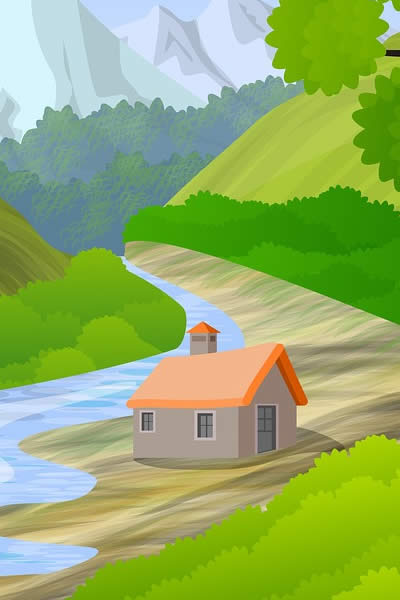Understanding these celestial bodies helps us appreciate our own place in the universe and the incredible forces that shaped our world.
This journey will guide you through each of the eight planets, exploring their unique characteristics, how they received their names, and when humanity first turned its gaze toward them.
- post content
- Mercury: the swift messenger
- Venus: Earth’s fiery twin
- Earth: the oasis of life
- Mars: the rusty red planet
- Jupiter: the gas giant king
- Saturn: the jewel of the rings
- Uranus: the sideways planet
- Neptune: the distant blue world
- Pluto: the dwarf planet at the edge
- conclusion
- content summary table
- find: telescopes and more
Mercury: The Swift Messenger
The closest planet to the Sun, Mercury is a world of extreme temperatures and a landscape scarred by countless impacts. It is a small, rocky planet, only slightly larger than Earth’s Moon, and it zips around the Sun faster than any other planet, completing its orbit in just 88 Earth days.
Because of its proximity to the Sun, Mercury was known to ancient civilizations, including the Sumerians, Babylonians, and Greeks, who could see it with the naked eye.
The Romans named the planet after their swift-footed messenger god, Mercury, a fitting title for a world that moves so quickly across the sky. Its surface is a testament to its long history, covered in craters from asteroid and comet collisions.
It also experiences the most extreme temperature swings in the solar system, with daytime temperatures soaring to 800°F (430°C) and nighttime temperatures plummeting to -290°F (-180°C), all because it has almost no atmosphere to trap heat.
Venus: Earth’s Fiery Twin
Often called Earth’s "sister planet" due to its similar size and composition, Venus is a world unlike our own. It is the second planet from the Sun and the hottest in our solar system, with a thick, toxic atmosphere that creates a runaway greenhouse effect.
Like Mercury, Venus is bright enough to be seen without a telescope and has been observed for millennia. Its brilliant, steady light led the ancient Romans to name it after their goddess of love and beauty.
Despite this serene name, the planet’s surface is a hostile environment. The atmosphere is composed mainly of carbon dioxide with clouds of sulfuric acid, and the surface temperature averages a blistering 864°F (462°C), hot enough to melt lead.
This intense heat is trapped by its dense atmosphere, making it a powerful example of the greenhouse effect.
Earth: The Oasis of Life
Our home, Earth, is the third planet from the Sun and the only known celestial body to harbor life. Its unique combination of liquid water on its surface, a protective atmosphere, and a suitable distance from the Sun has allowed a rich and diverse biosphere to flourish.
The name "Earth" is a Germanic word that simply means "the ground." It is the only planet not named after a Greek or Roman deity.
What makes our world truly special are the conditions that support life as we know it. Its atmosphere, rich in nitrogen and oxygen, shields us from harmful solar radiation, while its magnetic field deflects damaging solar winds.
The presence of vast oceans has played a crucial role in regulating the planet’s climate and fostering the evolution of life over billions of years.
Mars: The Rusty Red Planet
Mars, the fourth planet from the Sun, has captivated human imagination for centuries with its distinctive reddish hue and the possibility that it may have once hosted life. It is a cold, desert world with a very thin atmosphere, but evidence suggests it was once warmer and wetter.
The planet’s striking red color, caused by iron oxide (or rust) on its surface, led ancient civilizations to associate it with war and conflict. The Romans named it after their god of war, Mars.
Today, Mars is one of the most explored planets in our solar system. Rovers and orbiters have uncovered evidence of ancient riverbeds, deltas, and lakebeds, indicating that liquid water was once abundant.
Its two small moons, Phobos and Deimos, add to its mystique, and the ongoing search for signs of past or present microbial life continues to drive exploration.
Jupiter: The Gas Giant King
Stepping into the outer solar system, we first encounter Jupiter, the fifth and by far the largest planet. This gas giant is a colossal world of swirling clouds and immense storms, with a composition more like a star than a terrestrial planet.
Named after the king of the Roman gods, Jupiter’s sheer scale is difficult to comprehend; it is so large that all the other planets in the solar system could fit inside it. The planet is most famous for its Great Red Spot, a gigantic storm that has been raging for centuries.
Composed mainly of hydrogen and helium, Jupiter has no solid surface. It also has a faint ring system and dozens of moons, including the four large Galilean moons—Io, Europa, Ganymede, and Callisto—each a fascinating world in its own right.
Saturn: The Jewel of the Rings
The sixth planet from the Sun, Saturn, is arguably the most visually stunning planet in our solar system, thanks to its spectacular system of rings. Like Jupiter, it is a gas giant composed primarily of hydrogen and helium.
Saturn was named after the Roman god of agriculture and wealth, who was also the father of Jupiter. While other planets have rings, Saturn’s are the most extensive and visible. They are made of countless particles of ice and rock, ranging in size from tiny grains to massive chunks as large as a house.
Saturn itself is a blustery world with incredibly fast winds. It also has a diverse collection of over 80 moons, including the massive, hazy Titan and the icy Enceladus, which spouts water vapor from its southern pole.
Uranus: The Sideways Planet
The seventh planet, Uranus, is an ice giant with a unique and peculiar orientation. It is the first planet to have been discovered with a telescope, marking a new era in our understanding of the solar system’s scale.
Discovered by astronomer William Herschel in 1781, the planet was eventually named Uranus, after the Greek god of the sky. Its most unusual characteristic is its axial tilt; it rotates on its side, with its equator nearly at a right angle to its orbit.
This extreme tilt results in very long and dramatic seasons, with each pole getting 42 years of continuous sunlight followed by 42 years of darkness. Uranus is composed mostly of water, methane, and ammonia ices, with a faint ring system and 27 known moons.
Neptune: The Distant Blue World
The eighth and most distant planet from the Sun is Neptune, another ice giant with a deep blue appearance. It is a cold, dark, and incredibly windy world, with the fastest winds in the solar system.
Neptune’s existence was predicted mathematically before it was directly observed in 1846. It was named for the Roman god of the sea, a fitting choice for its vibrant blue color, which is caused by methane in its atmosphere.
The planet is home to powerful storms, including the Great Dark Spot, which was a large storm system similar to Jupiter’s Great Red Spot that has since disappeared. Neptune has a thin collection of rings and 14 known moons, the largest of which, Triton, orbits the planet in the opposite direction of Neptune’s rotation.
Pluto: The Dwarf Planet at the Edge
Pluto, once considered the ninth planet of our solar system, occupies a special place in the hearts of stargazers and scientists alike. Though reclassified as a dwarf planet in 2006, Pluto remains a fascinating and mysterious world.
Located in the Kuiper Belt, its surface is a frozen landscape composed of nitrogen, methane, and carbon monoxide ice. Despite its cold and distant nature, Pluto has surprised researchers with its geological activity, such as flowing glaciers and possible subsurface oceans that hint at a more dynamic world than once imagined.
Its thin atmosphere of nitrogen and methane sublimates and refreezes with its elliptical orbit, showcasing Pluto’s constant evolution. This distant dwarf planet reminds us that even the smallest corners of our cosmic neighborhood have profound stories to tell.
other related articles of interest:
Understanding Atoms: The Building Blocks of Everything Around Us
Conclusion: Our Place Among the Planets
From the scorching surface of Mercury to the windswept plains of Neptune and Pluto, the planets of our solar system offer a breathtaking tour of diverse and extreme environments.
Each world, with its unique characteristics and history, provides a piece of the puzzle to understanding how planetary systems form and evolve.
As we continue to explore these distant neighbors, we learn more not just about the cosmos, but about our own precious world and the delicate balance that makes life on Earth possible.
| Planet/Dwarf Planet | Key Characteristics | Interesting Facts |
|---|---|---|
| Mercury | Small, rocky, closest to the Sun | Extreme temperature swings, fastest orbit (88 Earth days) |
| Venus | Earth-sized, thick toxic atmosphere | Hottest planet due to runaway greenhouse effect |
| Earth | Liquid water, protective atmosphere | Only known planet to harbor life |
| Mars | Cold, desert-like, thin atmosphere | Known as the “Red Planet”, evidence of ancient water |
| Jupiter | Largest planet, gas giant | Hosts the Great Red Spot, dozens of moons |
| Saturn | Gas giant, extensive ring system | Over 80 moons, prominent icy rings |
| Uranus | Ice giant, rotates on its side | Extreme axial tilt, faint rings |
| Neptune | Ice giant, deep blue appearance | Fastest winds in the solar system, Great Dark Spot |
| Pluto | Dwarf planet, located in the Kuiper Belt | Frozen surface with flowing glaciers, thin atmosphere |
Image Credit: planets in our solar system by envato.com
end of post … please share it!
end of post idea for home improvement
view and analyze home improvement ideas at our LetsRenovate center
Helpful article? Leave us a quick comment below.
And please give this article a rating and/or share it within your social networks.








